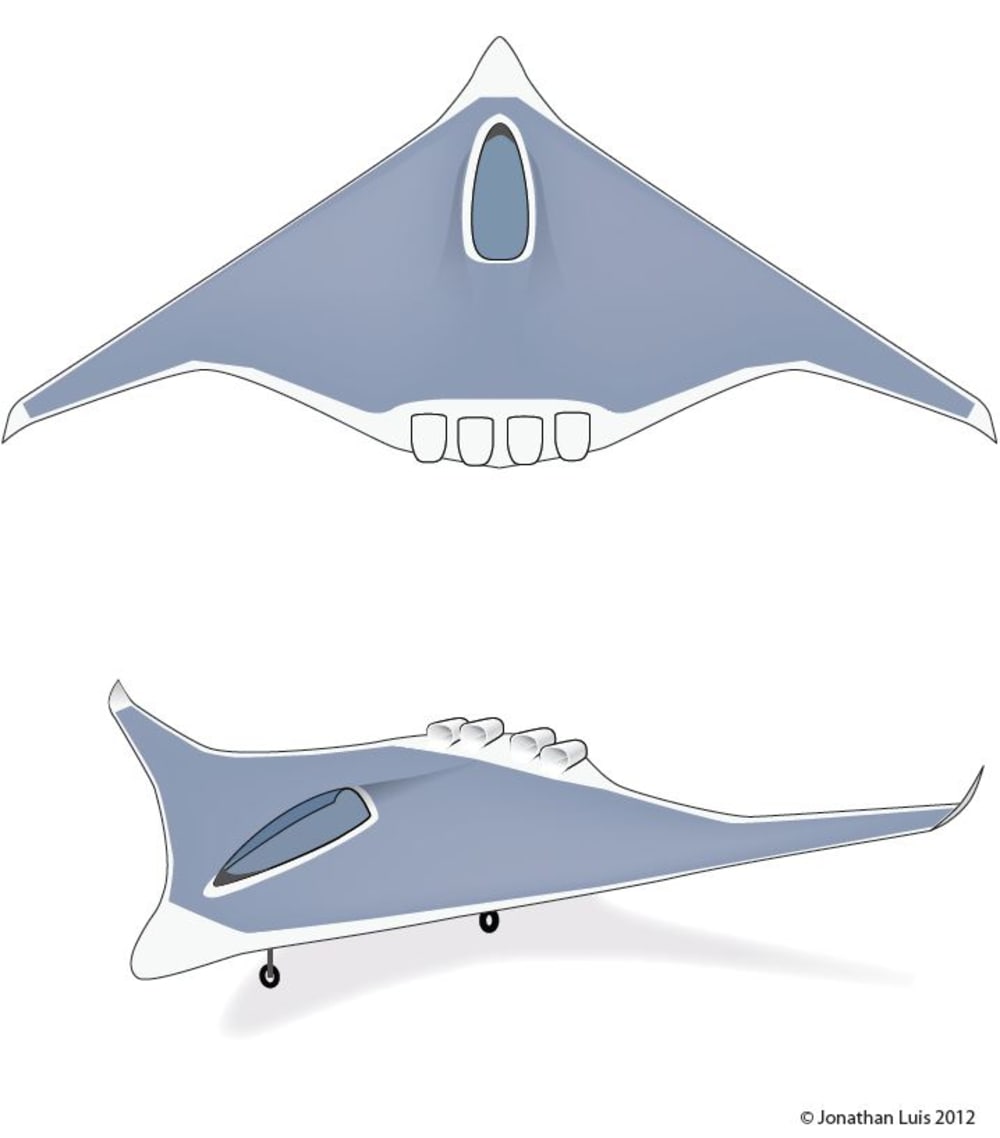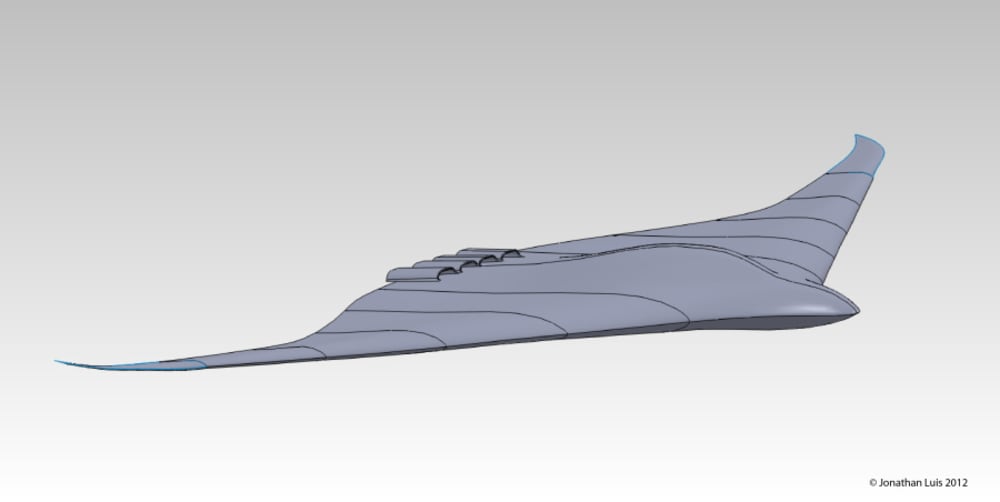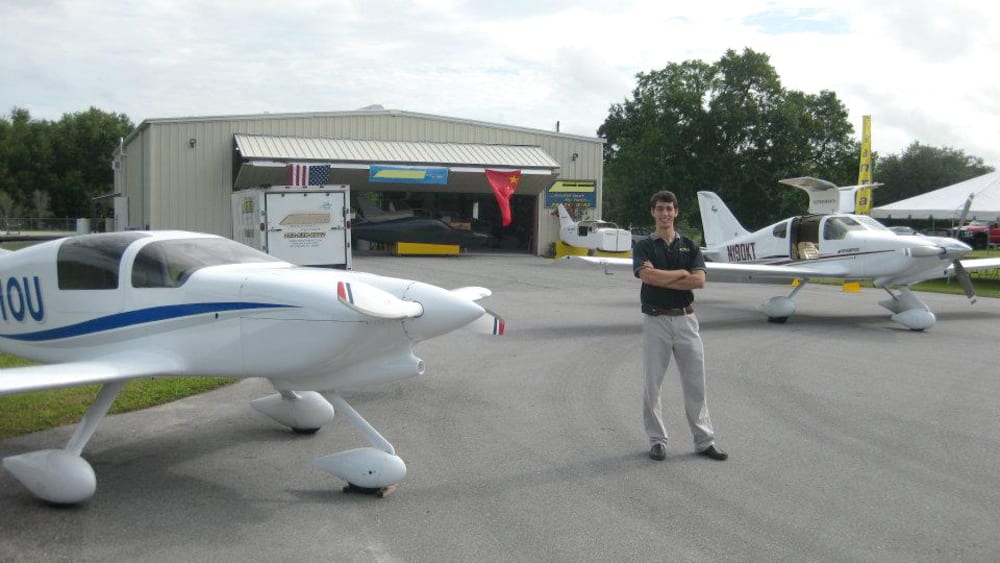As the auto industry surges forward with technological advancements, the general aviation industry continues to lag. Reliable means of transportation driven by renewable resources, such as solar powered blended wing body (BWB) aircraft, are viable and logical solutions in taking the industry forward.
Blended Wing Body (BWB):
By blending the wings with the fuselage, the aerodynamic efficiency of the airframe is increased due to greatly improved general lift distribution across the span. Since the main body's cross-section is airfoil shaped, the entire aircraft generates lift. This results in a dramatic increase in lift-to-drag ratio. Because of this, a blended wing body has the potential to increase aerodynamic efficiency by approximately 30 percent when compared to an airplane of similar size and payload. [1] In addition, motor nacelles located at the rear of the plane (above the top wing skin) provide a source for boundary layer ingestion (BLI) further improving the efficiency of the lifting-body design.
Energy Storage:
This plane's energy storage system consists of an array of batteries, similar in weight to an internal combustion engine, and will be stored inside the wings and fuselage.
Solar Panels:
A blended wing body offers a generous amount of surface area on which to place solar panels, another clear advantage over conventional aircraft. Recent breakthroughs in Concentrated Photovoltaic (CPV) technology are producing efficiencies of 33 percent, double what regular PV have been able to produce to date. Given the efficient characteristics of the BWB, the addition of alternative energy sources will result in a vastly greater miles per gallon gasoline equivalent (MPGe) than any other aircraft currently available. The plane will be equipped with charge monitoring technology (CMT), enabling batteries to be charged by solar power alone. When not in flight, the plane can fully charge using solar power. Alternatively, if hangared, charging can take place using a standard 110V A/C power supply. The solar panel system will continuously trickle charge the batteries and therefore increase the effective range of the aircraft during flight.
Production:
With the entire airframe being fabricated from composite materials using a two-piece mold system, construction is fast, simple and cost-effective. Standardization of the manufacturing process would be paramount to mass-production, once FAA certification has been granted.
Safety:
Incorporated into the airframe's design will be a Ballistic Recovery System (BRS) that deploys a parachute to safely return the aircraft to the ground, in the event of an emergency. Nevertheless, there are significantly fewer mechanical components that can fail.
Environmental Impact:
By positioning the ultra-efficient BLI nacelles strategically above the wing, noise pollution is kept to a minimum. Additional employment of Capacitor Filtering technology will further reduce engine noise, enhancing the overall flying experience.
Market:
A solar-powered blended wing body airplane will be geared towards personal/recreational flight, as well as small businesses. This design encompasses the existing general aviation market with an eye to reducing operational and ownership costs. Savings of up to 80% can be attained.
[1] http://www.nasa.gov/vision/earth/improvingflight/x48b.html
Like this entry?
-
About the Entrant
- Name:Jonathan Luis
- Type of entry:individual
- Software used for this entry:SolidWorks CAD and CFD, CFDesign
- Patent status:none








